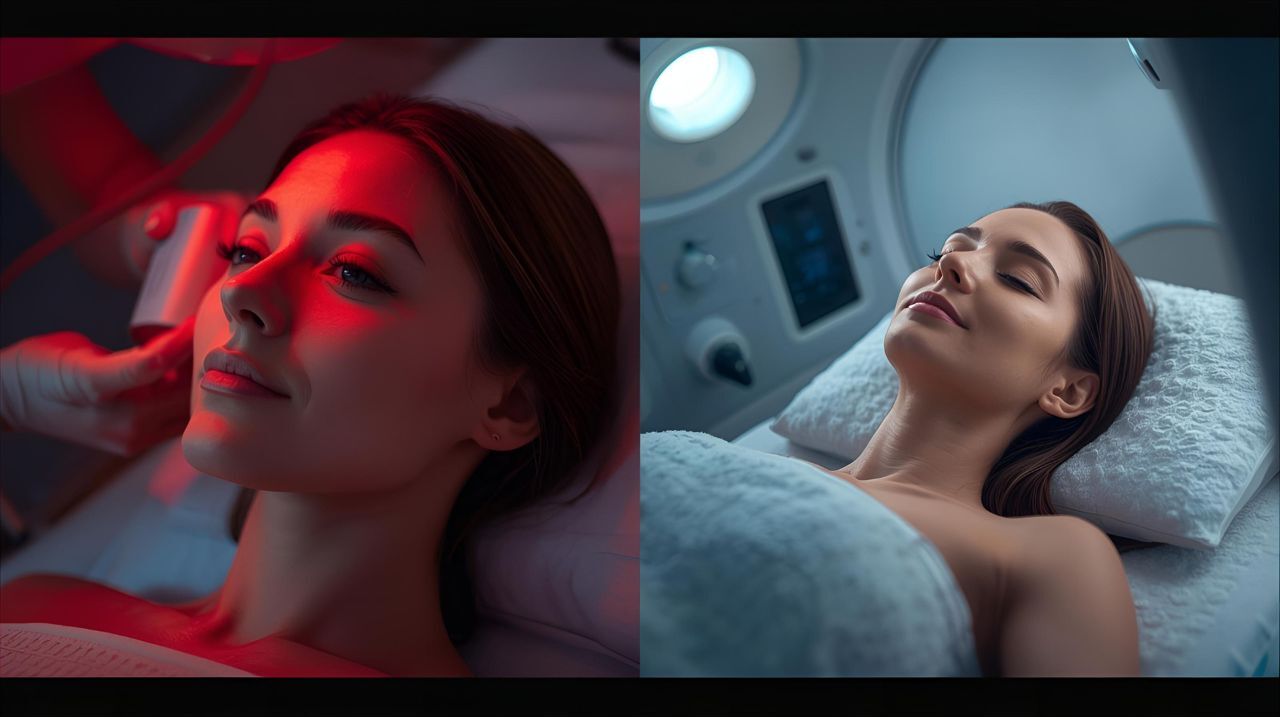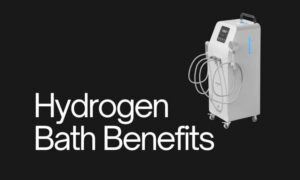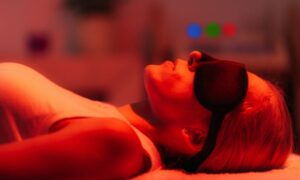Recovery is an essential aspect of any fitness or wellness regimen, whether you’re a professional athlete, a weekend warrior, or someone recovering from surgery or chronic injuries. The human body is naturally resilient, but intensive training, physical strain, and injuries can challenge its ability to repair tissues and restore optimal function. Modern recovery technologies have evolved significantly in recent years, with therapies designed to accelerate healing, reduce inflammation, and enhance overall wellness. Among these innovations, Red Light Therapy (RLT) and Hyperbaric Oxygen Therapy (HBOT) have gained significant attention for their effectiveness and growing popularity.
Red Light Therapy uses specific wavelengths of red and near-infrared light to stimulate cellular function and tissue repair. Hyperbaric Oxygen Therapy, on the other hand, involves breathing 100% oxygen in a pressurized chamber to increase oxygen delivery to tissues and promote healing at the cellular level. While both therapies aim to enhance recovery, they work through entirely different mechanisms and target varying physiological processes.
In this article, we will explore the science, benefits, limitations, and practical applications of both therapies. By the end, you’ll have a clear understanding of which therapy may be better suited to your recovery needs and how they can complement each other for optimal results.
What Is Red Light Therapy?
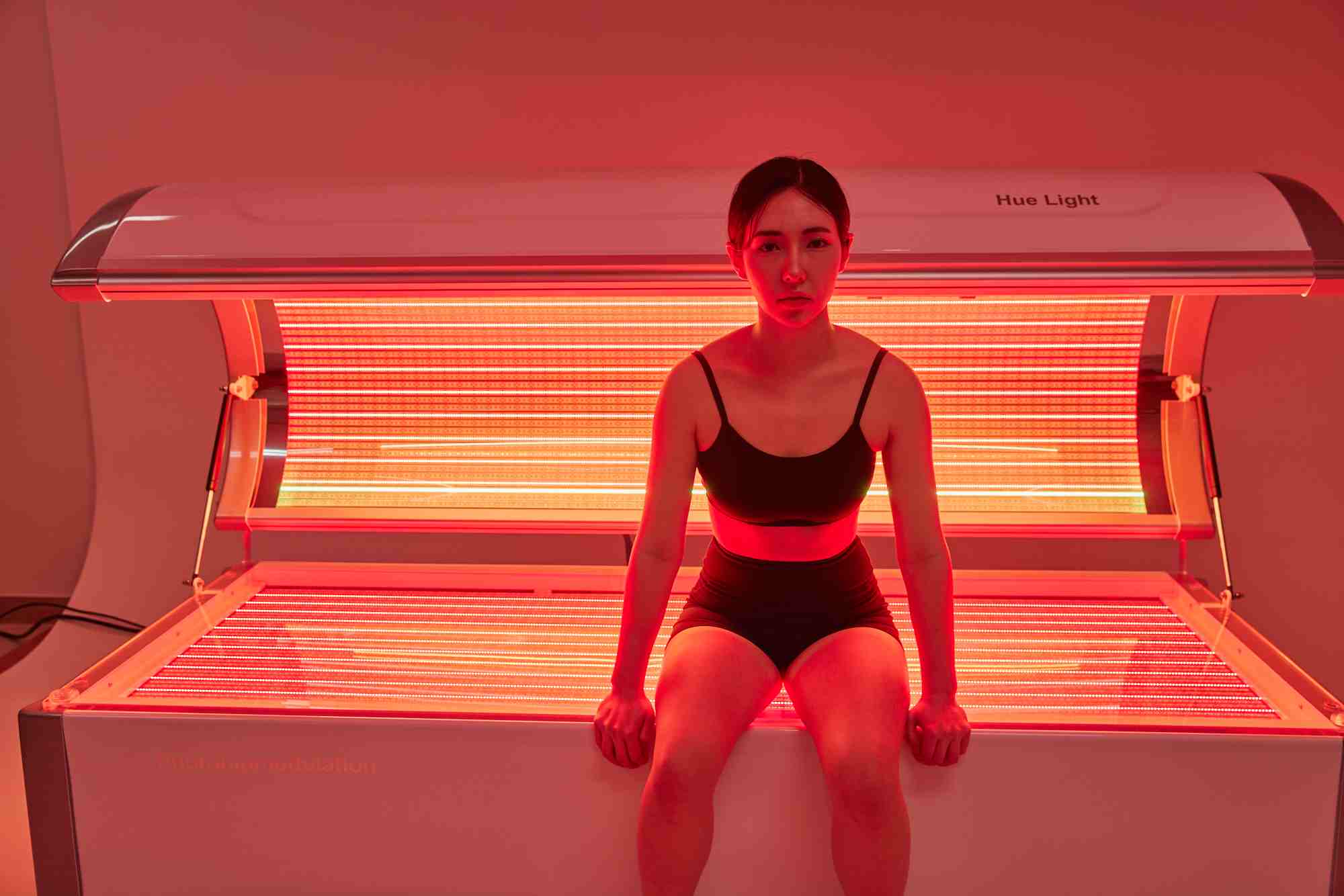 Red Light Therapy (RLT), also called photobiomodulation, is a non-invasive treatment that uses low-level wavelengths of red or near-infrared light to penetrate the skin and influence cellular processes. Unlike ultraviolet (UV) light, which can damage the skin, red and near-infrared light stimulates cells without causing harm.
Red Light Therapy (RLT), also called photobiomodulation, is a non-invasive treatment that uses low-level wavelengths of red or near-infrared light to penetrate the skin and influence cellular processes. Unlike ultraviolet (UV) light, which can damage the skin, red and near-infrared light stimulates cells without causing harm.
How It Works
RLT works primarily at the mitochondrial level, the mitochondria being the “powerhouse” of cells, responsible for producing energy. When tissues absorb red or near-infrared light, the mitochondria increase the production of adenosine triphosphate (ATP), which fuels cellular repair, regeneration, and metabolic activity. This boost in energy helps cells recover faster, reduces inflammation, and improves tissue function.
Common Uses in Recovery
Red Light Therapy has been used in a variety of recovery scenarios, including:
- Muscle repair: RLT helps reduce post-workout soreness and accelerates healing of muscle microtears.
- Joint health: Improves flexibility, reduces stiffness, and may help manage chronic joint conditions.
- Skin repair: Stimulates collagen production, aiding in wound healing and reducing scarring.
- Inflammation reduction: Helps mitigate oxidative stress and chronic inflammation in tissues.
Session Duration and Frequency
A RLT session lasts between 10 to 20 minutes, depending on the targeted area and intensity of the light. For optimal results, sessions are often scheduled 3–5 times per week, although even daily short sessions can be beneficial. RLT can be performed using professional devices in clinics or at-home devices such as red light panels, handheld units, or LED masks.
What Is Hyperbaric Oxygen Therapy?
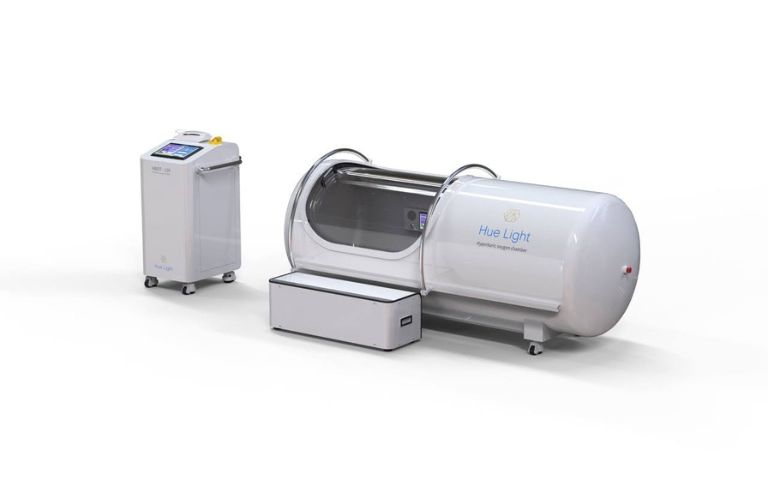
Hyperbaric Oxygen Therapy (HBOT) involves breathing pure oxygen in a pressurized chamber, typically at 1.5 to 3 times atmospheric pressure. This process increases the amount of oxygen dissolved in the blood and delivered to tissues, stimulating repair, reducing inflammation, and enhancing the body’s natural healing processes.
How It Works
Under normal conditions, oxygen is carried in the blood primarily by red blood cells. During HBOT, the increased pressure allows oxygen to dissolve directly into the plasma, reaching areas with limited blood flow or damaged tissue. This enhanced oxygen delivery supports cellular regeneration, fights infections, and accelerates recovery from injuries.
Common Uses in Recovery
HBOT is utilized in multiple contexts, including:
- Post-surgical recovery: Accelerates healing of surgical wounds.
- Chronic injury recovery: Supports tissues damaged due to repetitive strain, burns, or chronic inflammation.
- Neurological recovery: May aid in recovery from traumatic brain injuries and neuropathy.
- Fatigue and endurance: Enhances oxygenation to tissues, reducing post-exercise fatigue.
Session Duration and Frequency
A standard HBOT session lasts approximately 60 to 90 minutes, with treatments often recommended daily or several times a week for multiple weeks, depending on the severity of the condition. Sessions are conducted in specialized chambers under the supervision of trained medical staff to ensure safety.
Benefits of Red Light Therapy for Recovery
Red Light Therapy offers multiple benefits for physical recovery, athletic performance, and overall wellness.
Accelerates Muscle Repair
During physical activity, muscles undergo microtrauma that causes soreness and stiffness. RLT stimulates ATP production, which energizes muscle cells and accelerates the repair of damaged fibers. Research shows that athletes using RLT after workouts experience faster recovery, reduced delayed-onset muscle soreness (DOMS), and improved strength performance over time.
Reduces Inflammation and Oxidative Stress
Chronic inflammation and oxidative stress are major contributors to muscle fatigue, joint pain, and delayed healing. RLT reduces inflammatory markers and neutralizes free radicals, promoting faster tissue regeneration and minimizing long-term damage.
Improves Circulation and Joint Health
RLT enhances microcirculation in tissues, ensuring nutrients and oxygen reach injured or stressed areas efficiently. Improved blood flow supports joint mobility, reduces stiffness, and can benefit individuals with chronic joint conditions such as arthritis.
Non-Invasive and Minimal Side Effects
One of the major advantages of RLT is its safety profile. It is non-invasive, painless, and generally free of side effects. Mild redness, warmth, or eye sensitivity may occur but usually resolve quickly.
Benefits of Hyperbaric Oxygen Therapy for Recovery
HBOT offers a distinct set of benefits that complement or, in some cases, exceed the capabilities of RLT for certain conditions. Some of the benefits of HBOT are:
Enhances Tissue Oxygenation
Oxygen is essential for cellular repair, but damaged or inflamed tissues often suffer from poor blood flow, limiting oxygen delivery. HBOT significantly increases oxygen availability, supporting faster tissue repair and regeneration.
Speeds Up Wound Healing and Injury Recovery
HBOT has been shown to accelerate the healing of chronic wounds, burns, and post-surgical incisions. The therapy promotes the growth of new blood vessels (angiogenesis) and supports collagen formation, which are crucial for tissue repair.
Reduces Fatigue and Improves Endurance Recovery
By supplying tissues with additional oxygen, HBOT helps athletes recover from intense physical exertion faster, reducing muscle fatigue and improving overall endurance.
Potential Benefits for Chronic Conditions
HBOT is often recommended for patients with neuropathy, chronic inflammation, or vascular issues, as the enhanced oxygen delivery helps repair nerves, reduce inflammation, and restore tissue function.
Risks and Limitations of Hyperbaric Oxygen & Red Light Therapy
Both therapies are generally safe, but it is important to consider potential risks, limitations, and contraindications.
Red Light Therapy
- Skin Sensitivity: Some individuals may experience mild redness or irritation.
- Eye Sensitivity: Prolonged exposure without eye protection can cause discomfort.
- Consistency Required: Benefits are cumulative and require regular sessions over weeks or months.
Hyperbaric Oxygen Therapy
- Barotrauma: Changes in pressure can affect ears, sinuses, and lungs if not properly managed.
- Oxygen Toxicity: Breathing pure oxygen at high pressure for prolonged periods can be harmful.
- Cost and Accessibility: HBOT chambers are expensive and often require medical supervision.
- Medical Supervision Required: Not suitable for everyone, including those with certain lung conditions or untreated infections.
Red Light Therapy vs Hyperbaric Oxygen Therapy: Side-by-Side Comparison
| Feature | Red Light Therapy (RLT) | Hyperbaric Oxygen Therapy (HBOT) |
| Mechanism | Stimulates mitochondria to produce ATP and reduce inflammation | Increases oxygen delivery to tissues via pressurized oxygen |
| Primary Benefits | Muscle recovery, reduced inflammation, skin repair | Wound healing, tissue regeneration, enhanced oxygenation |
| Session Duration | 10–20 minutes | 60–90 minutes |
| Frequency | 3–5 times per week | Daily or several times a week |
| Invasiveness | Non-invasive | Non-invasive but requires chamber entry |
| Side Effects | Mild skin redness, eye sensitivity | Barotrauma, oxygen toxicity, fatigue |
| Cost | Moderate (home devices) | High (medical chamber sessions) |
| Accessibility | Home or clinic | Limited to specialized facilities |
Which Therapy Is Better for Recovery?
Choosing between HBOT and Red Light Therapy depends on your goals, condition, and lifestyle.
Ideal Scenarios for Red Light Therapy
- Daily muscle recovery after workouts
- Mild inflammation or joint discomfort
- Skin repair and wound healing
- Easy, at-home application
Ideal Scenarios for Hyperbaric Oxygen Therapy
- Severe injuries or post-surgical recovery
- Chronic wounds or ulcers
- Neurological or vascular recovery needs
- When rapid tissue repair is essential
Combining Red Light and Hyperbaric Oxygen Therapy
For some individuals, a combination of RLT and HBOT may provide synergistic effects. Using RLT for daily maintenance and HBOT for acute or severe recovery needs can maximize healing and performance.
How to Choose the Right Therapy for You
To determine the most suitable therapy, consider these factors:
- Type of Injury or Condition: Minor muscle fatigue vs. severe tissue damage
- Budget: RLT is more affordable; HBOT can be slightly costly
- Accessibility: RLT devices are widely available; HBOT requires a facility
- Medical History: Consult a healthcare professional to avoid contraindications
- Recovery Goals: Short-term performance boost vs. long-term tissue regeneration
Always consult with a sports medicine physician, physical therapist, or medical professional before starting either therapy, especially if you have underlying medical conditions or are recovering from major surgery.
The Future of Recovery: Hyperbaric Oxygen & Red Light Therapy
Both Hyperbaric Oxygen Therapy and Red light Therapy offer remarkable benefits for recovery, but they serve different purposes and function through distinct mechanisms. RLT excels in muscle repair, inflammation reduction, and skin health, making it ideal for daily recovery and maintenance. HBOT, on the other hand, provides enhanced oxygen delivery, rapid wound healing, and support for severe injuries, making it indispensable for post-surgical or chronic recovery scenarios.
Ultimately, the “better” therapy depends on your specific needs, budget, and accessibility. For many individuals, a strategic combination of both therapies may provide the most comprehensive recovery support, harnessing the strengths of each method to optimize healing, reduce downtime, and enhance overall performance.
Ready to experience the power of advanced recovery?
Discover how Red Light Therapy and Hyperbaric Oxygen Therapy can help you heal faster, perform better, and feel your best.
Contact us today to learn more or get expert guidance on choosing the right therapy for your needs.
